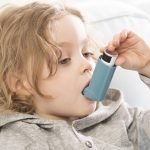As parents, we strive to do whatever we can to keep our children safe. That includes putting them in car seats, teaching them to stay away from strangers, enforcing the need to wear helmets when bicycle riding, and so much more. But sometimes, danger comes from the places we least expect it. New research has found that the very firearms we often buy for protection may be responsible for the hospitalization of kids on a daily basis in the United States.
The study, which was conducted at the Yale School of Medicine in New Haven, Connecticut, determined that those under the age of 20 across the U.S. are at risk for serious injuries caused by a gun at a rate of approximately 20 per day.1 Castillo, Michelle. “Firearms hospitalize about 20 U.S. kids a day: Study.” CBS News. 27 January 2014. Accessed 2 February 2014. http://www.cbsnews.com/news/firearm-injuries-hospitalize-about-20-us-kids-a-day-study By poring over the 2009 records from more than 4,000 medical centers in a nationally representative sample, the scientists discovered there were 7,391 hospitalizations of children and adolescents that resulted from injuries produced by a firearm.
The vast majority of these injuries–approximately 84 percent–were among those kids who were between the ages of 15 and 19. Male victims were, perhaps not surprisingly, much more common, with 89 percent of the hospitalizations. And among those males, black teenagers were more than 10 times more likely to be injured than white teens. Adolescents were most typically hurt during a gun assault. In contrast, and this is the important point, three-quarters of the injuries to children under the age of 10 were the result of accidents or an unintentional shooting. Traumatic brain injuries were far more widespread among the youngest subjects, those under five years old, but were relatively infrequent in teenagers, making up around 15 percent of their hospitalizations.
Overall, 52 percent of the kids were admitted for open wounds from gunshots; 50 percent were treated for fractures; and internal injuries to the abdomen, chest, or pelvis accounted for another 32 percent. A total of 453 of the children, approximately six percent, had fatal injuries. While that’s a relatively small percentage, many of the others who recovered faced extensive medical care afterward, in some cases for long periods of time. Their health histories showed that they frequently needed rehabilitation services such as physical therapy, presence of home health care providers, subsequent hospital admissions due to complications from the initial damage, and various types of mental health assistance.
The size and scope of the study lend it credence, and it suggests that much of the problem may come down to the accessibility of guns. When you own a firearm, part of your responsibility is to keep it locked up in a safe location or with a locking mechanism on it if you have children living in or visiting your home. Placing it unlocked and loaded in the back of a drawer puts kids at risk of finding and using it. In addition, if the firearm is stored in any place that could conceivably be accessed by a child, the ammunition should be stored in another location so that if a child did find the gun, it could not be fired. A 2005 study at the University of Washington in Seattle found that keeping firearms unloaded, locked, and separate from ammunition supplies decreased the risk of unintentional injuries and youth suicide in the homes of children and adolescents.2 Grossman, David C.; et al. “Gun Storage Practices and Risk of Youth Suicide and Unintentional Firearm Injuries.” Journal of the American Medical Association. 9 February 2005. Accessed 3 February 2014. http://174-136-6-120.static.directrouter.com/documents/GrossmanonGunstorageandSuicideJAMA05.pdf
Teenagers, on the other hand, may require a whole different set of rules than young children when it comes to gun safety. While little kids are simply curious and therefore more likely to fall victim to an accidental shooting, the study found teenagers to be involved in firearm assaults. If your teen is having issues with anger, depression, or bullying, you may want to remove firearms from the home temporarily or make sure your teens are not able to open the lock on the gun. Trying to get your children to open up and discuss their problems is not easy, but they need to know someone is listening and cares. Psychologists at school or in private practice may also be able to help work out these difficulties before they can potentially lead to tragic outcomes.
It’s also essential to teach children of all ages to have respect for the power of firearms and not use them unless in the presence of a parent. Firearms are legal in the United States and our right to bear arms is considered important to many people. This research simply serves as a valuable reminder to take a few extra precautions if you are a gun owner to help keep children out of harm’s way.
References
| ↑1 | Castillo, Michelle. “Firearms hospitalize about 20 U.S. kids a day: Study.” CBS News. 27 January 2014. Accessed 2 February 2014. http://www.cbsnews.com/news/firearm-injuries-hospitalize-about-20-us-kids-a-day-study |
|---|---|
| ↑2 | Grossman, David C.; et al. “Gun Storage Practices and Risk of Youth Suicide and Unintentional Firearm Injuries.” Journal of the American Medical Association. 9 February 2005. Accessed 3 February 2014. http://174-136-6-120.static.directrouter.com/documents/GrossmanonGunstorageandSuicideJAMA05.pdf |












jon,
jon,
it does you no credit to have someone dance around such a serious subject. we all respect you for your work in your field. a person who describes those who believe in the constitution and in “the right to bear arms” as something “important to many people” is pretty obviously excluding herself.
if you expand your definition of “health” to include too much, you will eventually lose credibility via dilution.
please stick to what you tell us about what you do best, ie, health via supplementation. anything beyond this will bring you into a whole new world of controversy; esp firearms.
Whether or not firearms are
Whether or not firearms are good or bad, or should be more or less regulated, is a political issue, not a health issue, and the Baseline of Health Foundation leaves that discussion to others. But the fact that children are being seriously injured and dying because some gun owners do not adequately secure their weapons is indeed a “correctable” health issue, and is well within the Foundation’s mandate as established by Jon Barron. In that sense, it is no different than telling parents they need to feed their children less sugar…and make it less available in their kitchens so children can’t access it on their own.
I agree. As a fourth
I agree. As a fourth generation gun owner (my great-granfather and grandfather owned a gun shop in Patterson NJ in the 1940’s through the 1970’s). The health issue, to me is also poor parenting in general. I grew up with guns everywhere – loaded, not loaded, being repaired on the dining room table, etc) and I was taught the danger of guns and how to use them safetly as soon as I could walk and talk. All of my friends had guns in the house and all of the boys and most of the girls either did target shooting or skeet-shooting (surprisingly without supervision, starting at about 10 or so!).
My opinion is twofold. First, parents are too busy making money and going out to parent properly – feeding the kids garbage, not teaching them basic safety, not giving them enough responsibility so they can learn how to make better decisions. And second, all the junk food, lack of responsibility, lack of proper bedtimes is creating kids with all kinds of mental issues, depression and ADD, etc. These troubled kids are the ones who end up shooting people up.
I think the problem with violence is not a “gun” problem but a “parenting” and “nutritional/health” issue.
From the text you can come up
From the text you can come up with 3 conclusions:
– Approx. 2 in 100.000 is a low rate of injuries.
– Most of the injuries (84%) seem to be caused by teenage criminal activity, not accidents.
– 10 times black to white victim rate. Are they suggesting to take guns from black people? Or that criminals are mostly black? I don’t understand.
Criminals don’t follow the law and don’t take safety courses. They won’t lock their guns, they are obviously not responsible parents.
This is an irresponsible article.